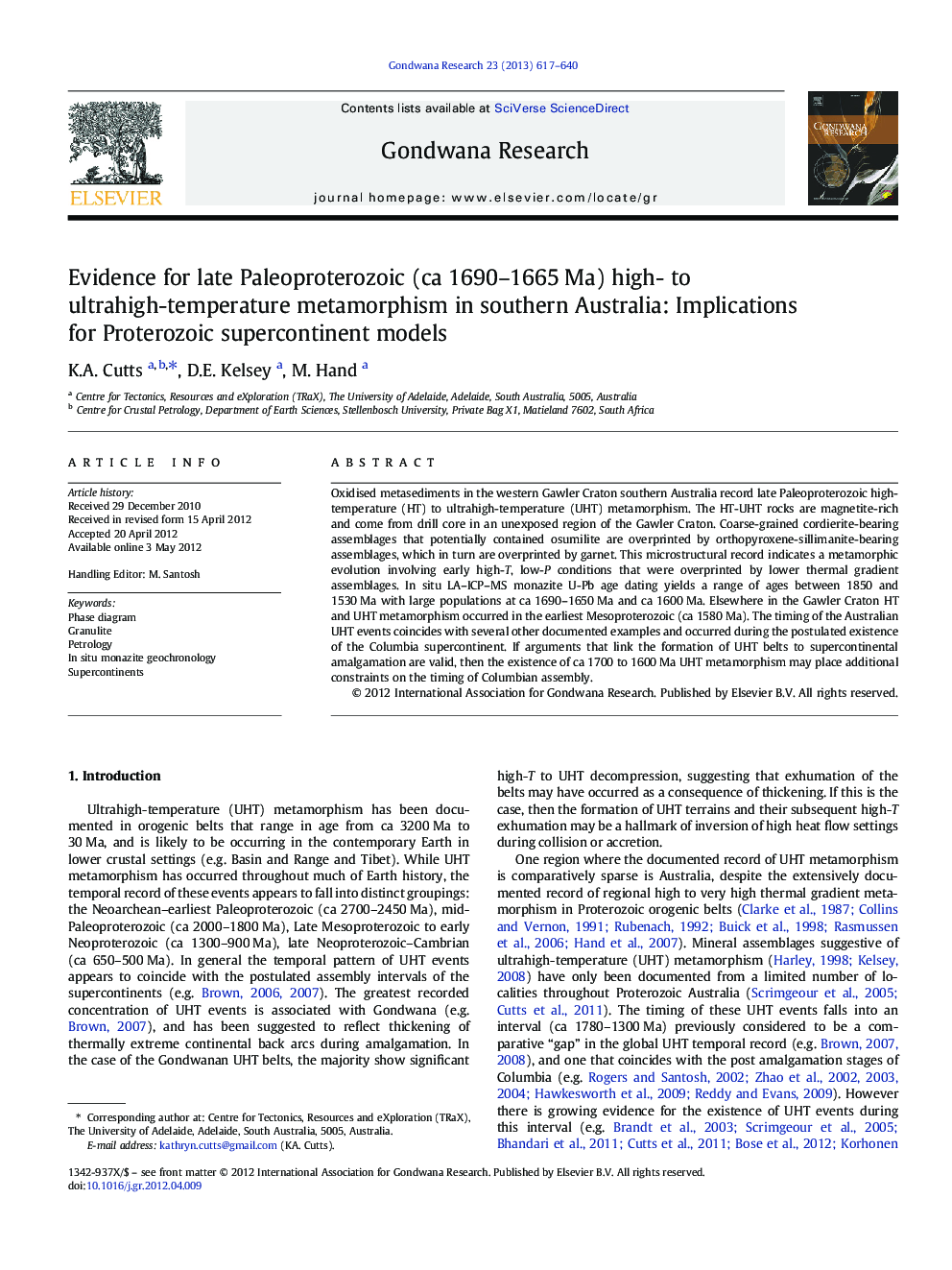| کد مقاله | کد نشریه | سال انتشار | مقاله انگلیسی | نسخه تمام متن |
|---|---|---|---|---|
| 4727459 | 1356379 | 2013 | 24 صفحه PDF | دانلود رایگان |

Oxidised metasediments in the western Gawler Craton southern Australia record late Paleoproterozoic high-temperature (HT) to ultrahigh-temperature (UHT) metamorphism. The HT-UHT rocks are magnetite-rich and come from drill core in an unexposed region of the Gawler Craton. Coarse-grained cordierite-bearing assemblages that potentially contained osumilite are overprinted by orthopyroxene-sillimanite-bearing assemblages, which in turn are overprinted by garnet. This microstructural record indicates a metamorphic evolution involving early high-T, low-P conditions that were overprinted by lower thermal gradient assemblages. In situ LA–ICP–MS monazite U-Pb age dating yields a range of ages between 1850 and 1530 Ma with large populations at ca 1690–1650 Ma and ca 1600 Ma. Elsewhere in the Gawler Craton HT and UHT metamorphism occurred in the earliest Mesoproterozoic (ca 1580 Ma). The timing of the Australian UHT events coincides with several other documented examples and occurred during the postulated existence of the Columbia supercontinent. If arguments that link the formation of UHT belts to supercontinental amalgamation are valid, then the existence of ca 1700 to 1600 Ma UHT metamorphism may place additional constraints on the timing of Columbian assembly.
Figure optionsDownload as PowerPoint slideHighlights
► HT to UHT metamorphism at ca. 1690–1665 Ma in southern Australia.
► Interpreted peak conditions of 5–7 kbar and 870–950 °C.
► Overprinted by foliated, fine-grained sillimanite + orthropyroxene at conditions of 8–10 kbar and 770–880 °C.
► This UHT event is one of many occurring between 1700 and 1500 Ma globally.
► This suggests Columbia continued amalgamation until ca 1500 Ma or began to disperse at 1700 Ma.
Journal: Gondwana Research - Volume 23, Issue 2, March 2013, Pages 617–640